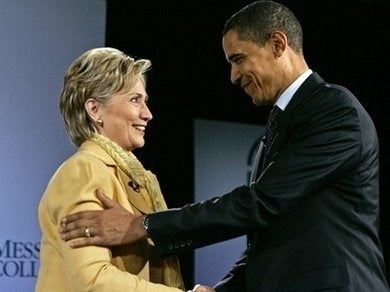
It is not a Miss Congeniality award, not a runner-up trophy, nor a consolation prize of any sort. The vice presidency has been derided and desired, but one central fact about it is inescapable
In 1966, after a reporting trip with Vice President Hubert H. Humphrey, I enjoyed off-the-record drinks with one of the Great Society's smartest people. The veep's frustration was a topic. Humphrey, his aides and even some of President Lyndon Johnson's braintrusters lamented the waste of Humphrey's skills and experience as senator and as mayor of Minneapolis. Shouldn't HHH be ''czar'' of the programs the Johnson administration had so eagerly begun? Can't the vice presidency be a position of line responsibility?
Robert C. Wood, whose book popularized the word "suburbia," set down his drink and was professorially patient. A political scientist at MIT, he was undersecretary, then secretary, of Housing and Urban Development. ''The vice president is the only person the president can't fire,'' Bob Wood said, confirming his commonsense role in an optimistic era. "Marty, you have to look at the Constitution."
Yup, there it is, several times. Cabinet secretaries serve at the pleasure of the president, who can dismiss them at any time. To oust a vice president requires a vote of the House and two-thirds vote in the Senate: a messy matter, but it would be fascinating television.
The vice presidency is a hugely erroneous afterthought by the Framers. Alexander Hamilton, in Federalist Paper 68, conceded that having the vice president preside over the Senate "has been objected to as superfluous, if not mischievous." The first vice president, John Adams, called the second vice president, Thomas Jefferson, a "consummate intriguer," which turned out to be accurate. Jefferson defeated Adams for the presidency in 1800. But because Aaron Burr tied Jefferson in the Electoral College, the young Republic changed the Constitution with the 12th Amendment, specifying how vice presidents were to be elected.
In the 19th century, party bosses made the No. 2 post a ticket-balancing nonentity. Vice presidents who entered the White House because of the death of a president -- John Tyler, Millard Fillmore, Andrew Johnson and Chester Alan Arthur -- were not strong enough to be win presidential nominations at party conventions:
Theodore Roosevelt was a famous V.P., a war hero and former governor of New York. But most 20th century vice presidents resembled Alexander P. Throttlebottom, the clueless, feckless and fictional V.P. in the 1931 George and Ira Gershwin musical Of Thee I Sing. This veep "lives at 1448 Z Street... with the other boarders" and mostly "sits around in the park and feeds the pigeons, and takes walks, and goes to the movies."
Dick Cheney is no Throttlebottom. All the more reason why the next president should make clear who's in charge here.
Choosing a vice president is the first important executive decision a would-be president makes. If Barack Obama is pressured by Hillary Clinton, a mathematical question arises: why would he choose someone whom record numbers of Democrats have voted against? More significantly, if a candidate for No. 1 is forced to choose someone he doesn't want then the potential president, not the would-be veep, would be the true Throttlebottom.